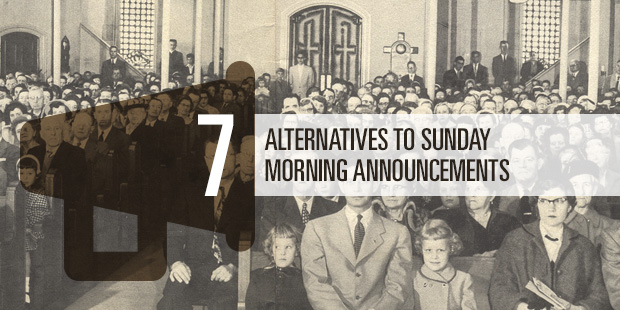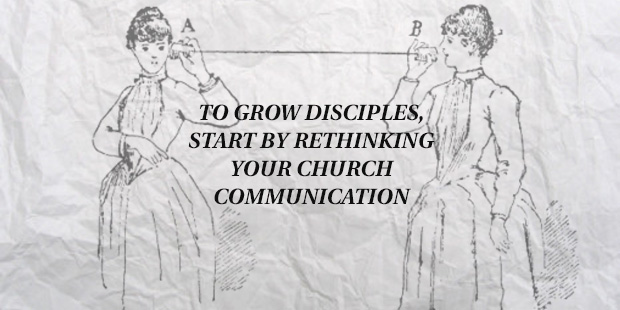
8 Tips for Better Church Announcements
When “announcements” are done well they help move the community to be more engaged in the vision your church. When they are done poorly they drag on the service and make everyone wish they would just stop! The difference between these two extremes is often really simple things. Here are a handful of quick tips to consider next time you (or someone at your church) is getting ready to lead this part of the service.
- Narrow the Focus // As the person actually standing up and “giving announcements” your job should be to focus in on the 1 (or maybe 2) things that are most important at this point in your life of church. Reduce don’t expand. Avoid the temptation to add to the list!
- Rehearse It! // Michael Jordan threw 500 free-throw balls every morning. U2 still practices daily. You can rehearse your announcements for this weekend a few times before you get up there! Bonus points if you rehearse in front of someone who will give you critical feedback!
- It’s About Connecting. // The goal of this time in the service is to draw people into your community not to “advertise stuff”. What does your “audience” need at this point? Think about that … not what the ministry leaders want advertised. How can you help people take the next steps into community?
- Check the Mic // Test every piece of technology that you will be relying on. Make sure the batteries are changed in that snappy wireless mic. Ensure that whoever is running the video stuff (if you’re using it) is in the room with you at some point before the service to make sure it all works.
- Take a Deep Breath // People need you to be relaxed … take a deep breath before you go onto stage. Don’t worry if you fumble over a few words … smile and move on. If you get stressed … your audience will be stressed. Relax … you’re among friends.
- It’s not about You. (or Your Stuff.) // How can I say this nicely? You aren’t the main deal. What you are doing is important but it’s not the reason people came to church. Set the stage for what’s happening in your community and then get out of the way. Don’t try to make it about you.
- Be Visual // Show and tell was interesting when you were a kid because we’re visual thinkers. That’s even more the case now. If you don’t have some sort of visual to back up your points … don’t talk about it. (Really.)
- Thank Before Ask // You should be publicly thanking at least as much as your are publicly asking. Make sure to thank people for financially giving to your church … thank them for volunteering … be a thanking machine! Keep this ratio right and people will gladly listen to you.
Read more from Rich here.

Tags: Attention, Awareness, Rich Birch




























